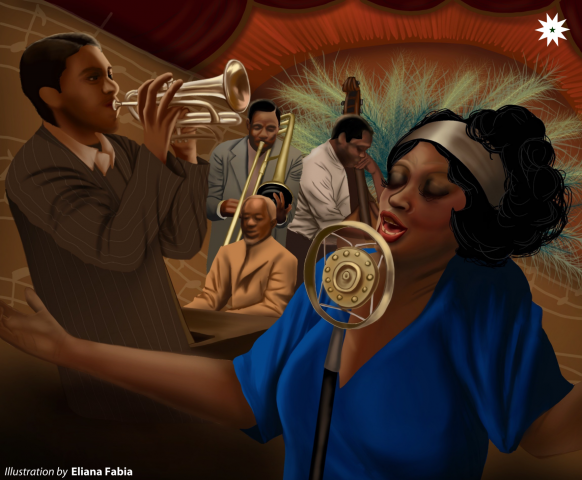
Movements across the globe have called for massive reforms in oppressive institutions in the wake of George Floyd’s murder at the hands of the police. As art has always reflected social and cultural changes, perhaps Netflix’s Ma Rainey’s Black Bottom couldn’t have come at a better time. Boldly chronicling racial injustice with the revolutionary legacy of a blues icon, the film is a reminder of the thin line between history and the present.
Diving headfirst into hot-button themes of race and representation, this film adaptation of August Wilson’s Tony-nominated play eagerly navigates through the powerful narrative with the help of its passionate and predominantly black creative team led by renowned theater director George C. Wolfe. Proudly including Academy Award winner Viola Davis as the titular Ma Rainey, actor-turned-producer Denzel Washington, and Chadwick Boseman in his final film role, seeing this stacked roster immortalize the classic play alone is worth the price of admission. With its unapologetic portrayal of resistance against prejudice, Ma Rainey’s Black Bottom appropriately positions itself at the center of the undying fight against racial discrimination.
Never a slow drag
Being Wilson’s contemporary and close collaborator on many of his projects, Ruben Santiago-Hudson was the obvious choice to pen this adaptation’s screenplay. He adds subtle tweaks to the original story that adapts the classic play for modern-day sensibilities, without tarnishing its impactful legacy. Showcasing a compelling mix of Broadway and Hollywood heavyweights, the film’s writing accentuates its larger-than-life performances.
Beyond the gold teeth, weight, and padding she needed to physically resemble the real-life Mother of the Blues, Davis provides a dimension to her character that puts the spotlight on her unfathomable talent. Given the claustrophobic nature of the tense recording session that this film details, Davis delivers an aggressive, yet vulnerable, performance.
On the other hand, Boseman’s career-best performance as Levee, a trumpet player who also doubles as Ma Rainey’s adversary, is undoubtedly an incredible addition to his overwhelming catalog of black film legends. Colman Domingo, Glynn Turman, and Michael Potts round out the main cast with their strong supporting performances as Cutler, Toledo, and Slow Drag.
The dance that puts you in a trance
However, the heart of the film is in its pulsing blues-influenced score. Composer Branford Marsalis effortlessly renders Ma Rainey’s soulful music and the sharpness of Wilson’s story into a colorful musical world. The result is a layered reflection on the confusion and tragedy of the black experience in the Jim Crow era, highlighted during the score’s most somber and avant-garde moments.
The film also successfully transports its audiences to 20s Chicago with its nostalgic sets and classy wardrobe choices as it showcases the familiar flashy facade of the decade. Meanwhile, the interior shots contrast the period’s splendor with the realities of people of color through the hard-to-open doors, unfavorable ventilation, and the enclosed spaces.
A-one, and a-two, and a-you know what to do
Despite the dynamic flow, Ma Rainey’s Black Bottom falls prey to the hazards of a play-to-film adaptation. The film tries to overcome this by overdoing its technical aspects at the expense of effective delivery. Lousily stitched-together shots hinder the thematic progression of the story. Likewise, when flashy camerawork or quick-cut editing is employed, it distracts from the brilliant rawness of its stellar cast. While the most powerful elements of the film mostly overcome these struggles, the presence of these unnecessary pitfalls creates a bothersome viewing experience.
Though the film adaptation fails to perfectly stick the landing, it does make for an unforgettable watch. More than just an Oscar-bait biopic, Ma Rainey’s Black Bottom serves as a powerful exercise in examining the philosophy of the Black Lives Matter movement—that the hate faced by black people in 1927 is still very much alive today, almost a century later. The film never spoon-feeds its audience with the gratuitous depiction of violence or oppression but instead trusts us to understand the gravity of the story they are telling. In doing so, they put the spotlight on the actions that must be taken to address inequality. As Cutler utters before the band starts playing, the film tells us, “You know what to do.”
Rating: 3.5/4
